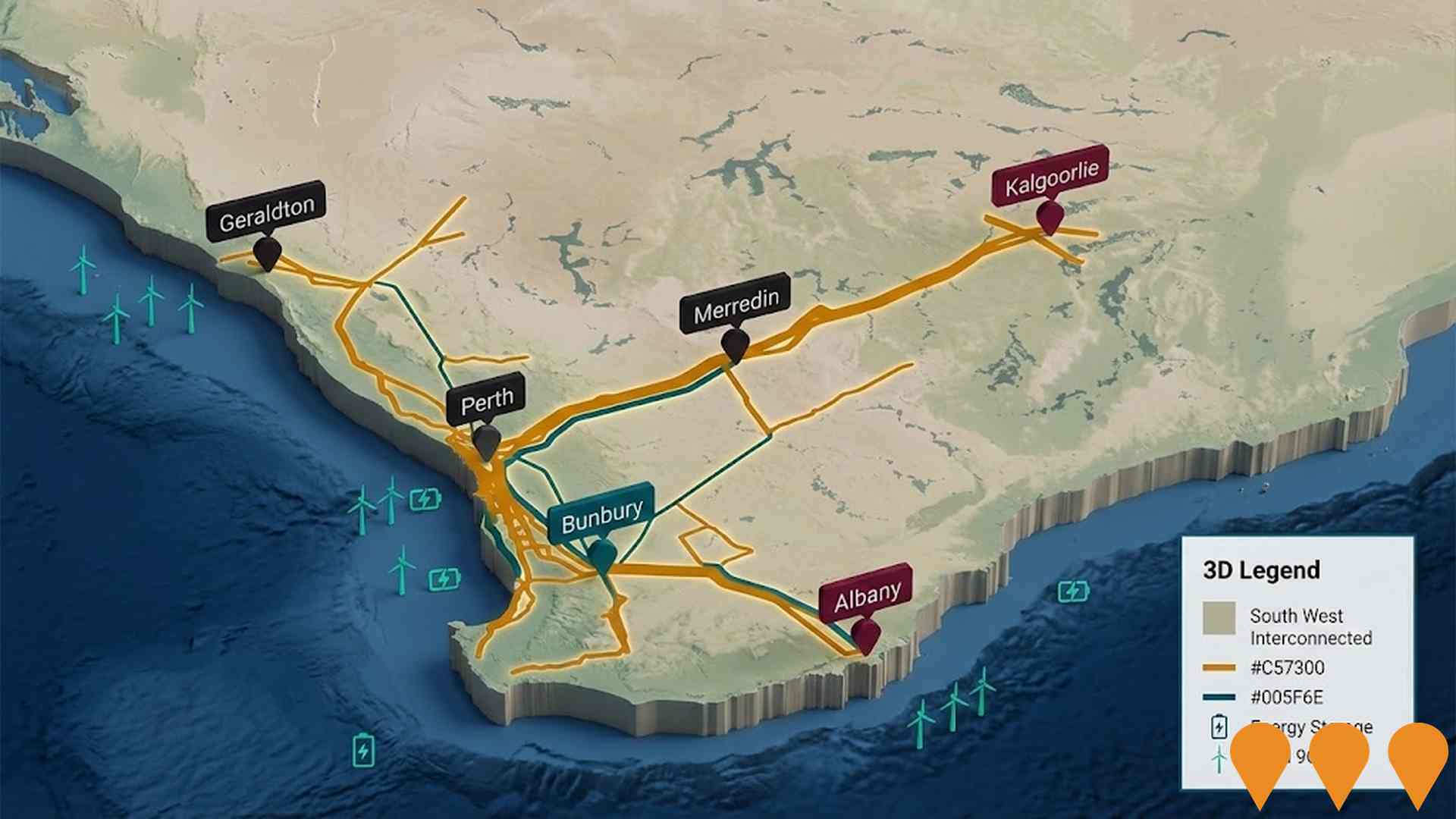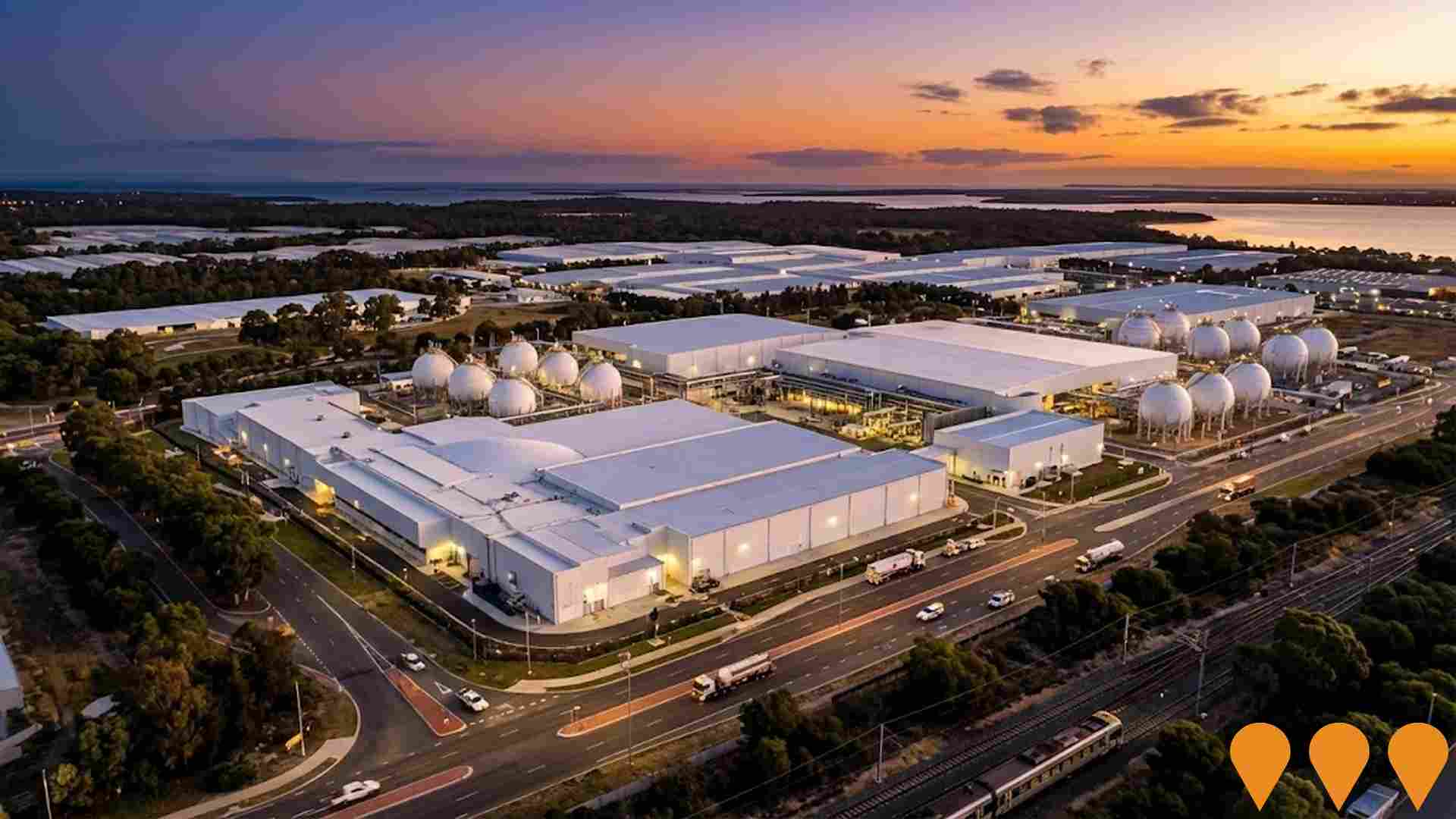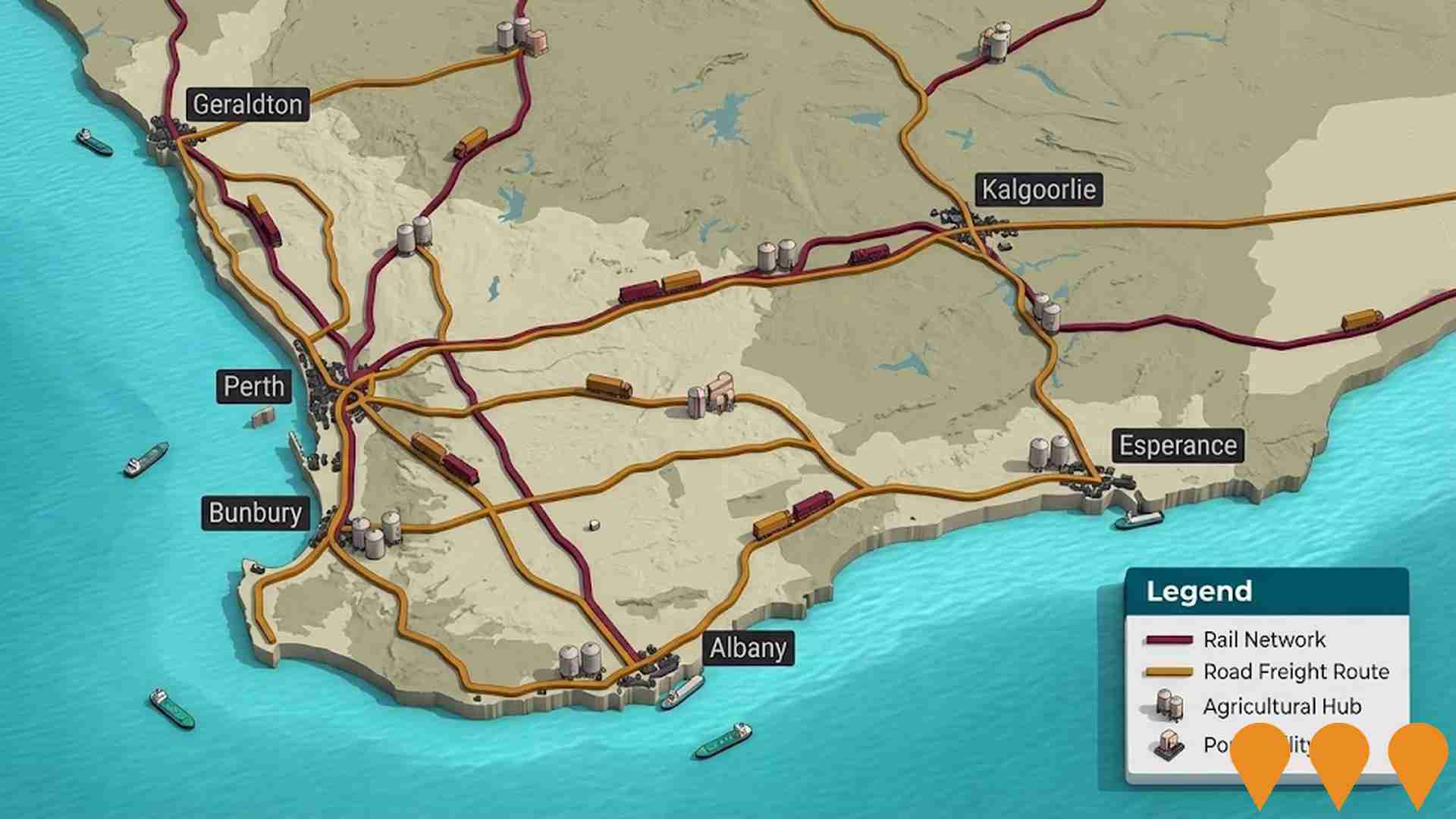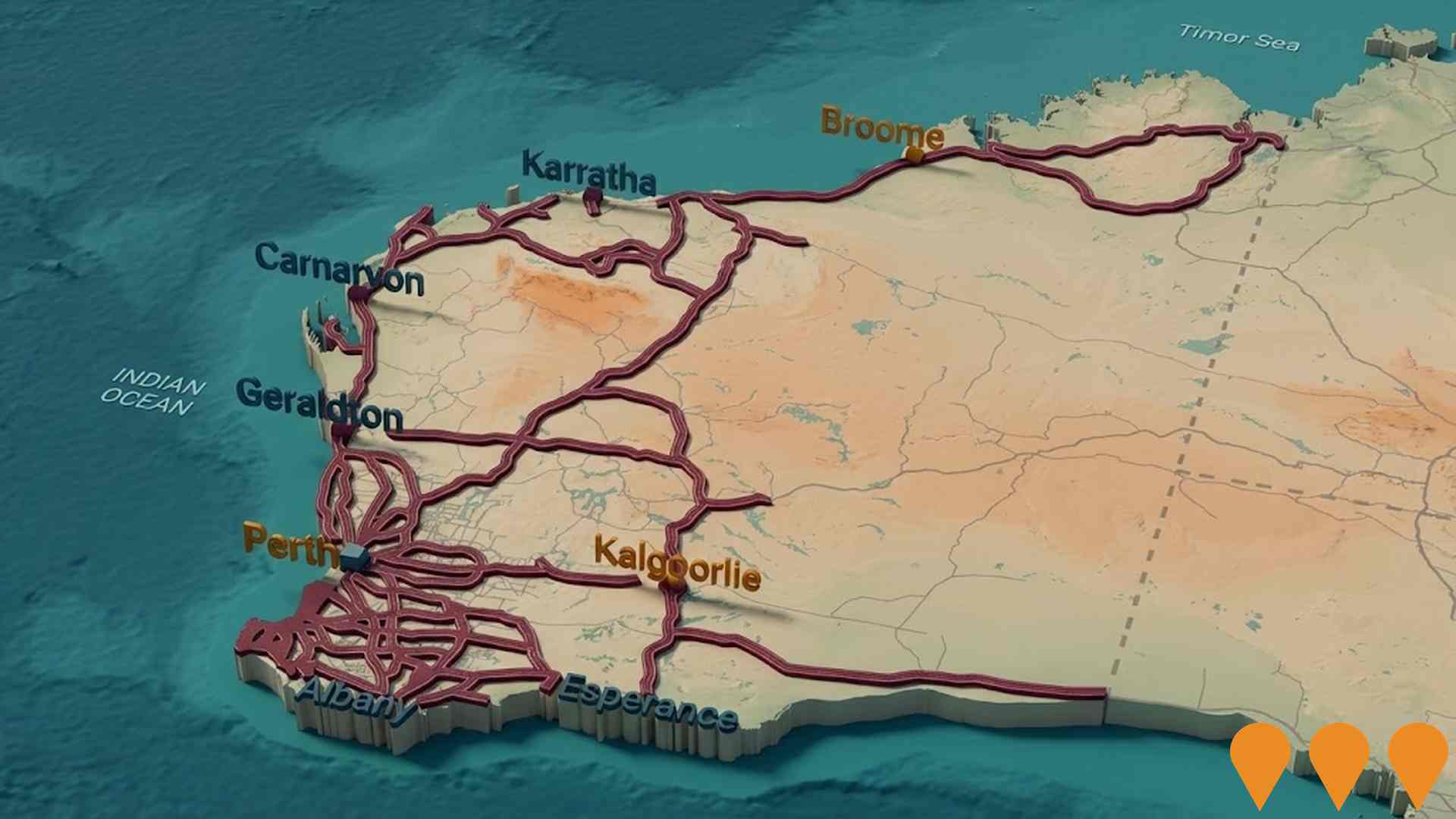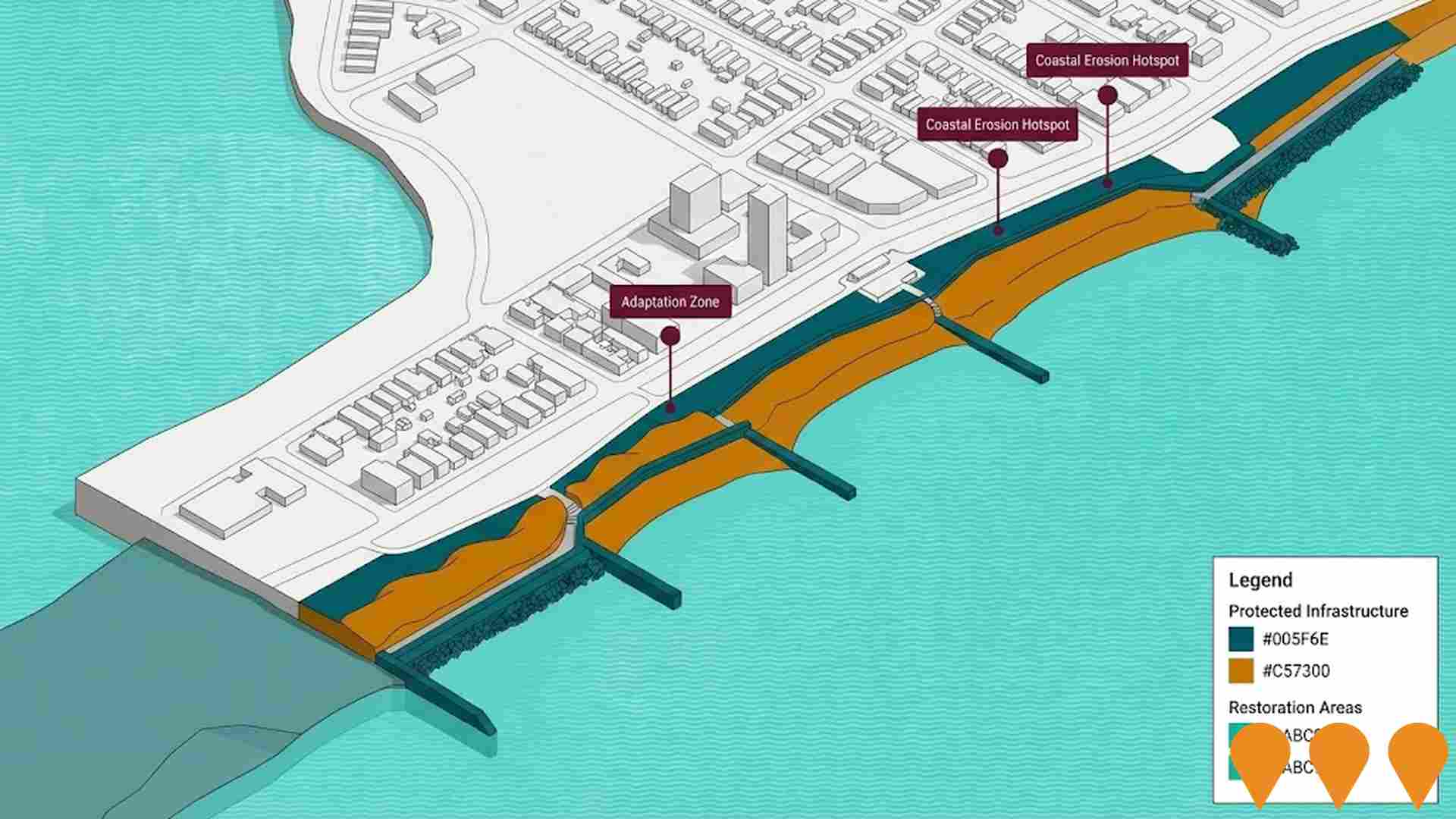Chart Color Schemes
est. as @ -- *
ABS ERP | -- people | --
2021 Census | -- people
Sales Activity
Curious about local property values? Filter the chart to assess the volume and appreciation (including resales) trends and regional comparisons, or scroll to the map below view this information at an individual property level.
Find a Recent Sale
Sales Detail
Population
Murray is positioned among the lower quartile of areas assessed nationally for population growth based on AreaSearch's assessment of recent, and medium term trends
Murray's population is approximately 2,647 as of August 2025. This figure represents an increase of 271 people since the 2021 Census, which reported a population of 2,376 people. The growth was inferred from the estimated resident population of 2,530 in June 2024 and an additional 34 validated new addresses since the Census date. This results in a population density ratio of 1 person per square kilometer. Murray's population grew by 11.4% between the 2021 Census and August 2025, surpassing both the SA3 area's growth rate (5.9%) and the national average. Natural growth contributed approximately 54.2% of overall population gains during recent periods.
AreaSearch uses ABS/Geoscience Australia projections for each SA2 area, released in 2024 with a base year of 2022. For areas not covered by this data, AreaSearch employs the growth rates by age cohort provided by the ABS in its latest Greater Capital Region projections (released in 2023, based on 2022 data). Based on projected demographic shifts, Murray is expected to experience above median population growth for Australian non-metropolitan areas. By 2041, the area's population is projected to increase by 362 persons, reflecting an overall increase of 8.9% over the 17-year period.
Frequently Asked Questions - Population
Development
Residential development activity is lower than average in Murray according to AreaSearch's national comparison of local real estate markets
Murray has averaged approximately 14 new dwelling approvals annually over the past five financial years, from FY-21 to FY-25, with a total of 72 homes approved during this period and an additional 3 approved so far in FY-26. On average, around 0.5 people have moved to the area each year for every dwelling built over these five financial years. This indicates that new supply is meeting or exceeding demand, providing ample buyer choice and creating capacity for population growth beyond current forecasts.
The average construction value of new properties is $398,000, which aligns with regional patterns. In FY-26, Murray has recorded $2.3 million in commercial development approvals, reflecting the area's residential character. Compared to the Rest of WA, Murray demonstrates 109.0% higher construction activity per person, offering greater choice for buyers. Recent construction comprises 80.0% detached houses and 20.0% townhouses or apartments, preserving the area's low-density nature with an emphasis on detached housing that attracts space-seeking buyers. This represents a significant shift from the current housing mix of 97.0% houses, reflecting reduced availability of development sites and addressing changing lifestyle demands and affordability requirements.
With approximately 180 people per approval, Murray reflects a developing area. Future projections indicate that Murray is expected to add 236 residents by 2041. Based on current development patterns, new housing supply should readily meet demand, offering favorable conditions for buyers and potentially facilitating population growth beyond current projections.
Frequently Asked Questions - Development
Infrastructure
Murray has moderate levels of nearby infrastructure activity, ranking in the 44thth percentile nationally
Changes to local infrastructure significantly impact an area's performance. AreaSearch has identified one major project expected to affect the region: Dardadine Wind Farm, Additional Australind Trains Procurement, South West Interconnected System Transformation, and Bellwether Wind Farm are key projects, with the following list highlighting those most relevant.
Professional plan users can use the search below to filter and access additional projects.
INFRASTRUCTURE SEARCH
 Denotes AI-based impression for illustrative purposes only, not to be taken as definitive under any circumstances. Please follow links and conduct other investigations from the project's source for actual imagery. Developers and project owners wishing us to use original imagery please Contact Us and we will do so.
Denotes AI-based impression for illustrative purposes only, not to be taken as definitive under any circumstances. Please follow links and conduct other investigations from the project's source for actual imagery. Developers and project owners wishing us to use original imagery please Contact Us and we will do so.
Frequently Asked Questions - Infrastructure
METRONET
METRONET is Western Australia's largest-ever public transport infrastructure program, delivering over 72 kilometres of new passenger rail and 23 new stations across the Perth metropolitan area. As of December 2025, multiple stages are complete or nearing completion: Yanchep Rail Extension (opened July 2024), Morley-Ellenbrook Line (opened December 2024), Thornlie-Cockburn Link (opened June 2025), and Byford Rail Extension (opened October 2025). Remaining projects including the Airport Line upgrades, Victoria Park-Canning Level Crossing Removal (six crossings removed by late 2025), Circle Route Bus Priority, and final stages of the Ellenbrook Line are under active construction, with the overall program on track for substantial completion by 2027-2028. The program also includes 246 locally built C-series railcars, high-capacity signalling, and extensive station precinct activation.
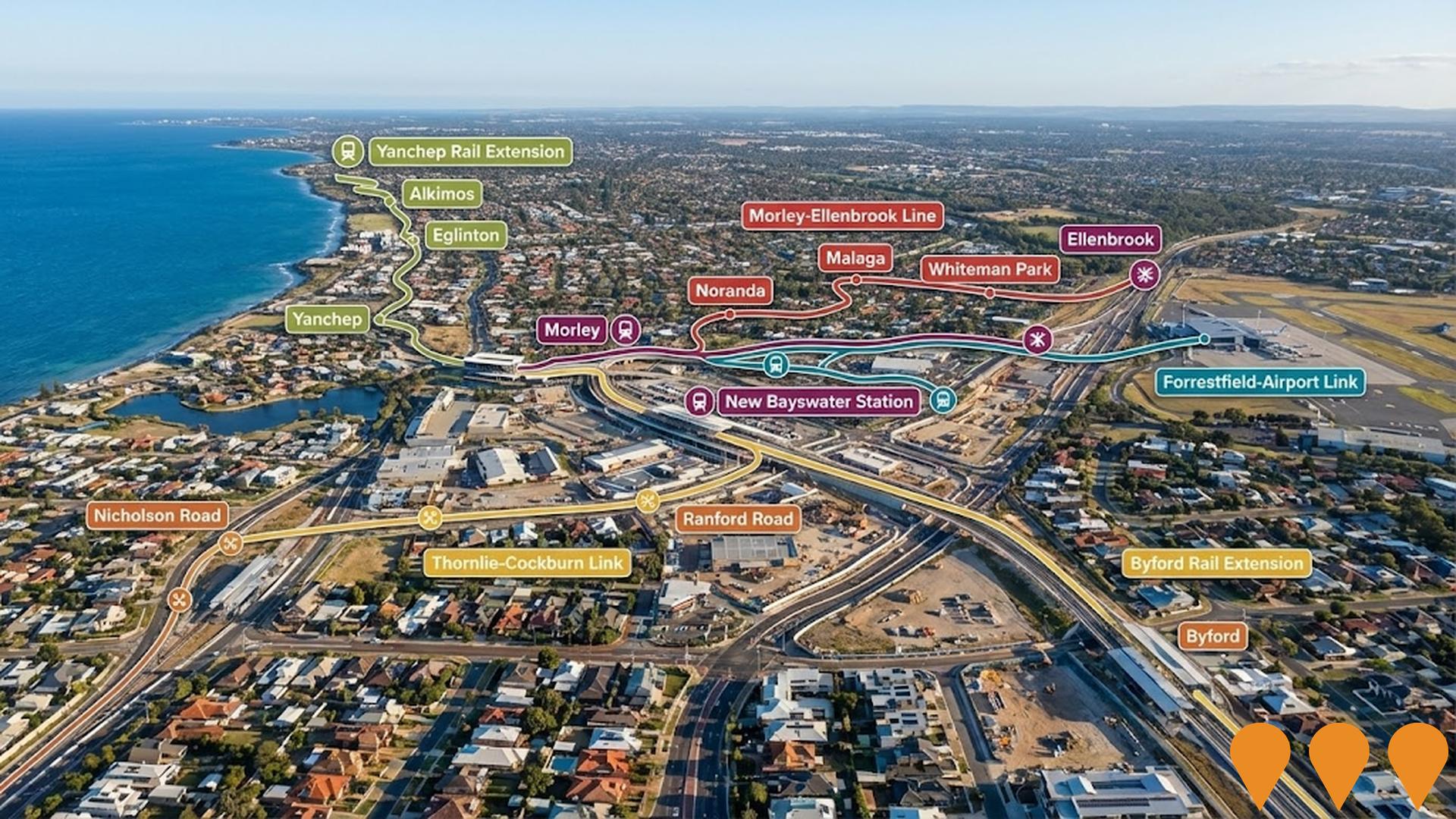
Dardadine Wind Farm
A proposed wind farm with a capacity of up to 1209.6MW and up to 168 wind turbines. It is expected to generate enough capacity to supply around 700,000 homes. The proposal also includes a containerised battery energy storage system. The project is currently undergoing technical studies and design, with community consultation planned for late 2024.

Bellwether Wind Farm
A flagship renewable energy project for the Wheatbelt region of Western Australia. The proposed wind farm would consist of up to 400 turbines with 6.2MW capacity each over a project area of 100,000 hectares with dozens of landowners, with a potential generation capacity of approximately 3 GW. The project is strategically located along the proposed Clean Energy Link - East transmission line. It would provide drought-resistant incomes to farmers and support local towns with new business opportunities, as well as the chance to retrain or re-skill into the renewable energy sector, while providing power to existing businesses seeking to decarbonize their operations. Construction is proposed to start in 2028 with completion targeted for 2030.
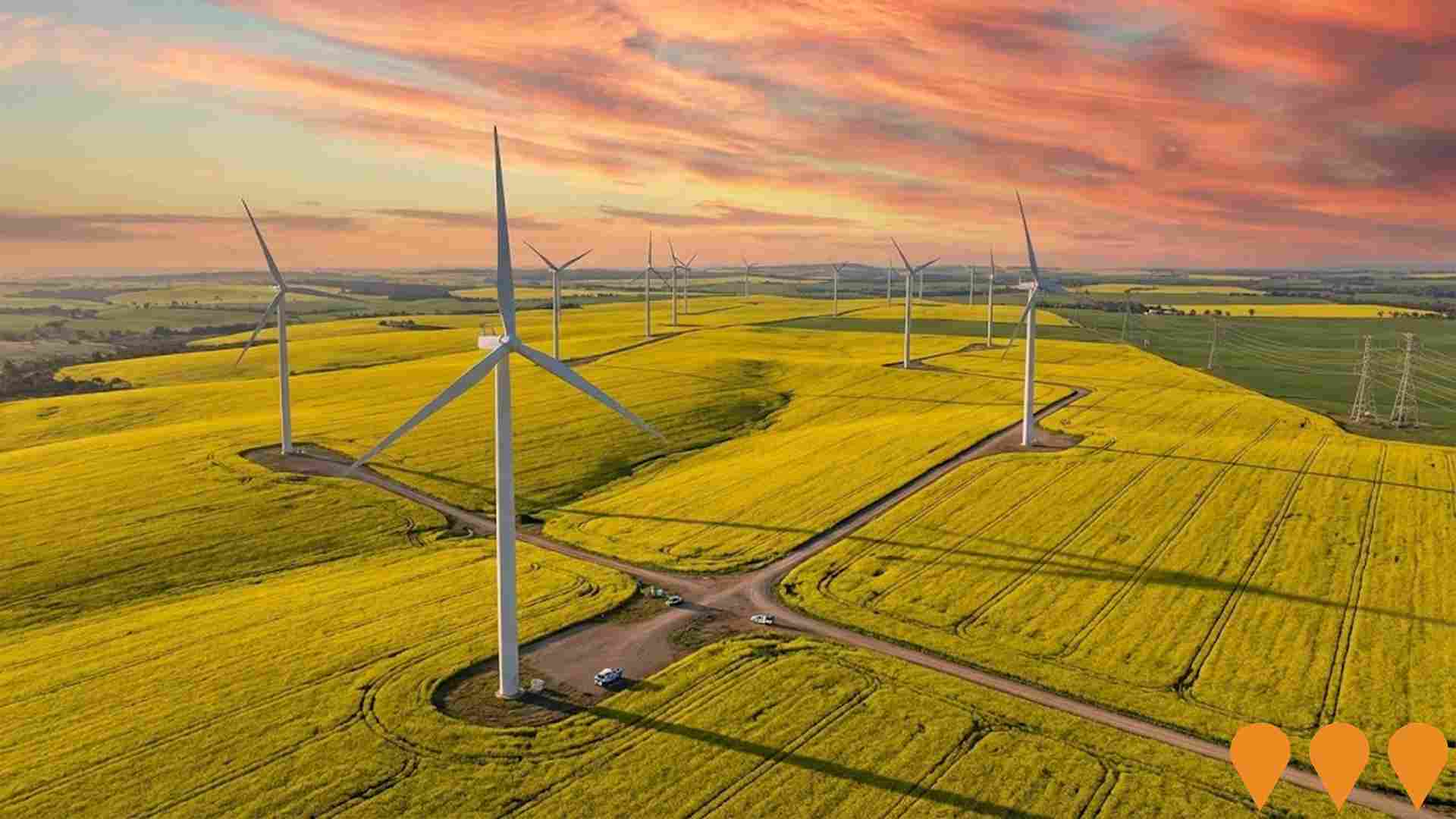
METRONET High Capacity Signalling Project
City wide upgrade of Perth's urban rail signalling and train control systems to a communications based train control automatic train control system across about 500 km of the Transperth network, increasing capacity by up to 40 percent and supporting more frequent, reliable METRONET passenger services. Works include new in cab signalling, trackside equipment, integration with the Public Transport Operations Control Centre and digital radio, delivered progressively over about a decade.
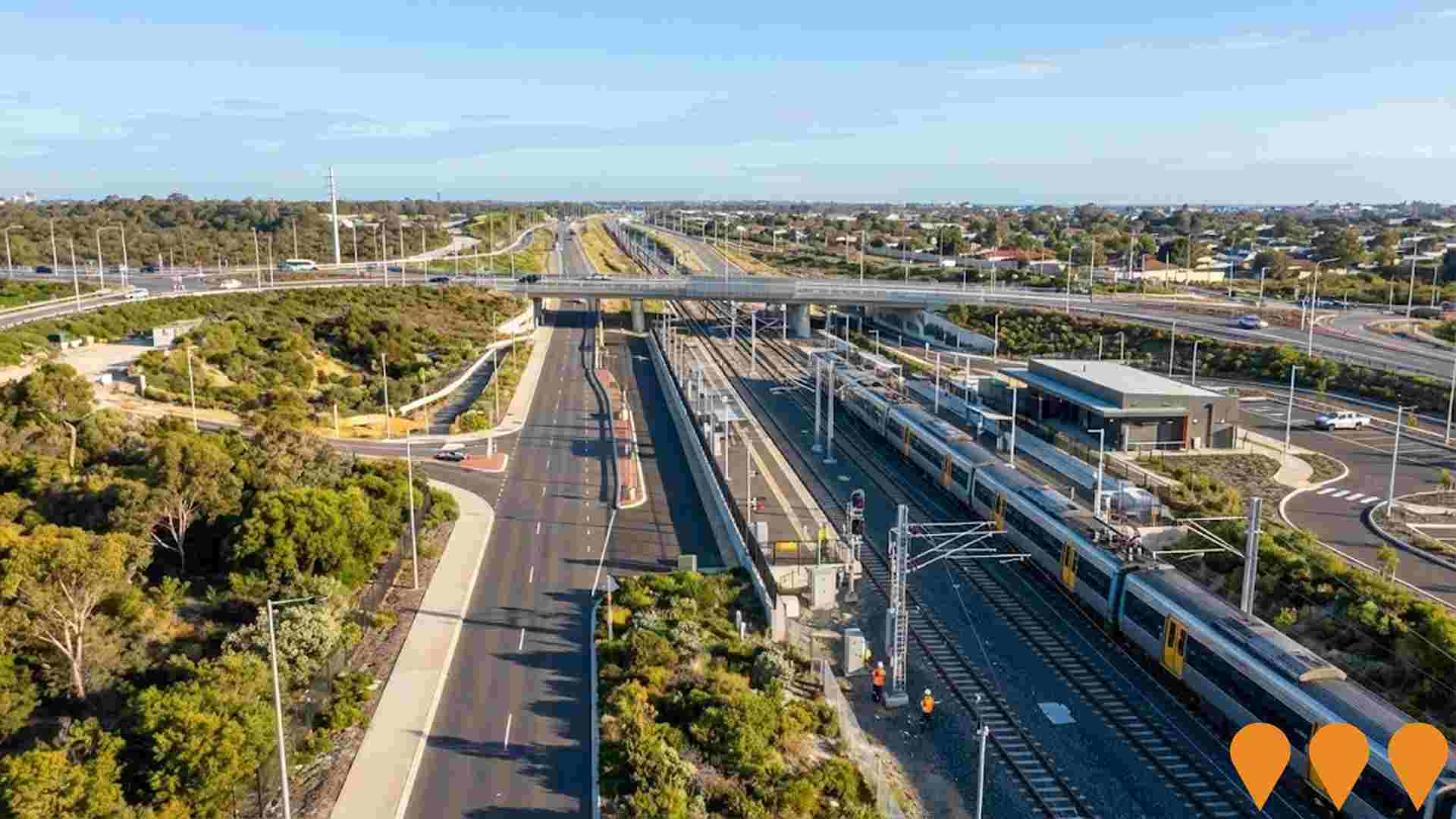
METRONET High Capacity Signalling Program
The High Capacity Signalling Project will upgrade the existing signalling and control systems to an integrated communications-based train control system, making better use of the existing rail network by allowing more trains to run more often. The project aims to increase network capacity by 40 percent, provide energy-saving benefits, enhance cybersecurity, and future-proof the network for growth.
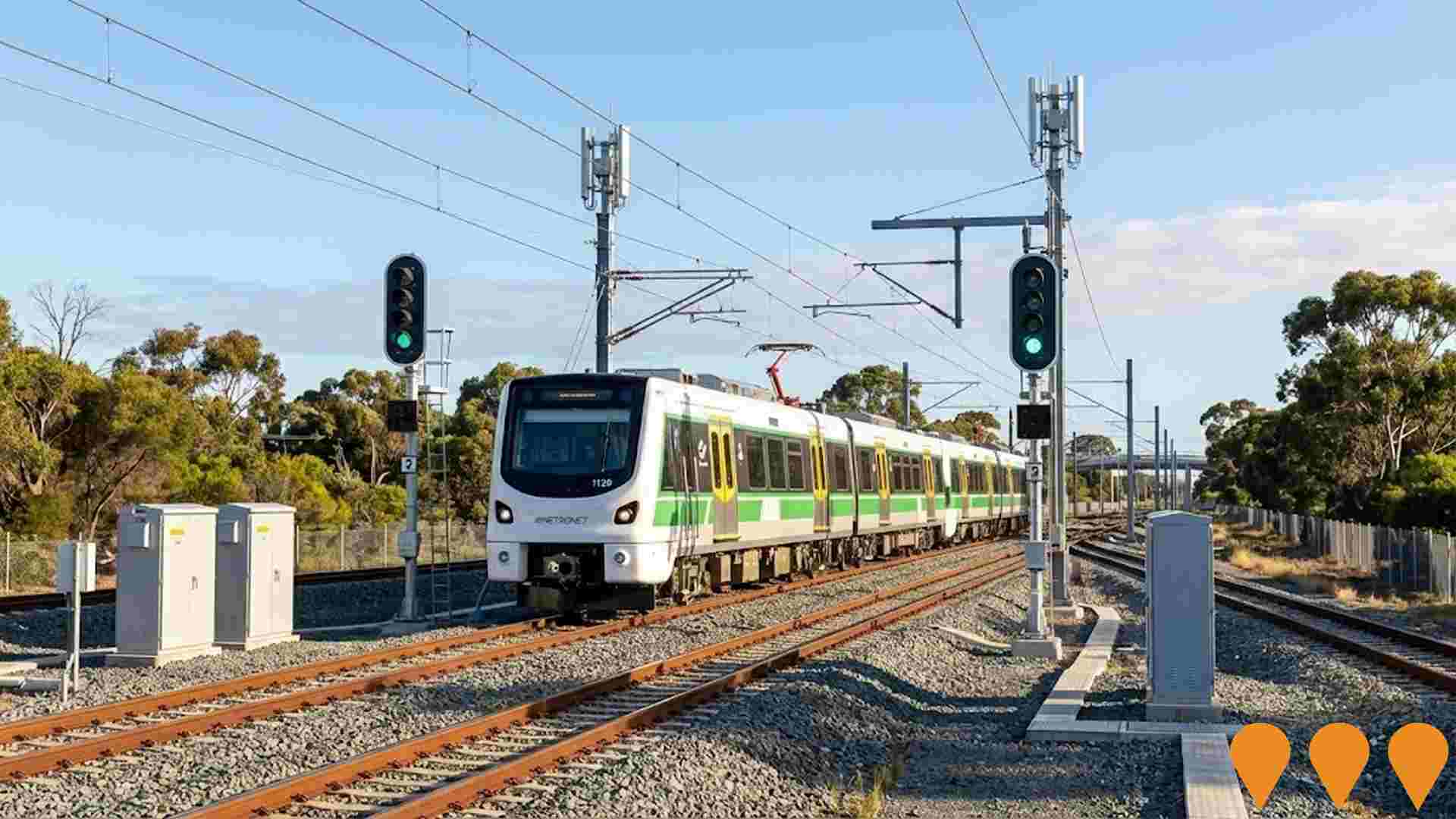
WA Regional Digital Connectivity Program (WARDCP)
Statewide co-investment program delivering new and upgraded mobile, fixed wireless and broadband infrastructure to improve reliability, coverage and performance for regional and remote Western Australia. Current workstreams include the Regional Telecommunications Project, State Agriculture Telecommunications Infrastructure Fund, and the WA Regional Digital Connectivity Program (WARDCP).

Additional Australind Trains Procurement
Procurement of two additional three-car Australind diesel railcar sets to improve service reliability and support increased frequency on the Perth to Bunbury route. Part of WA Government's broader rail improvement strategy, these trains will be manufactured by Alstom at the Bellevue facility and are scheduled to commence operations when the Armadale Train Line reopens in early 2026.
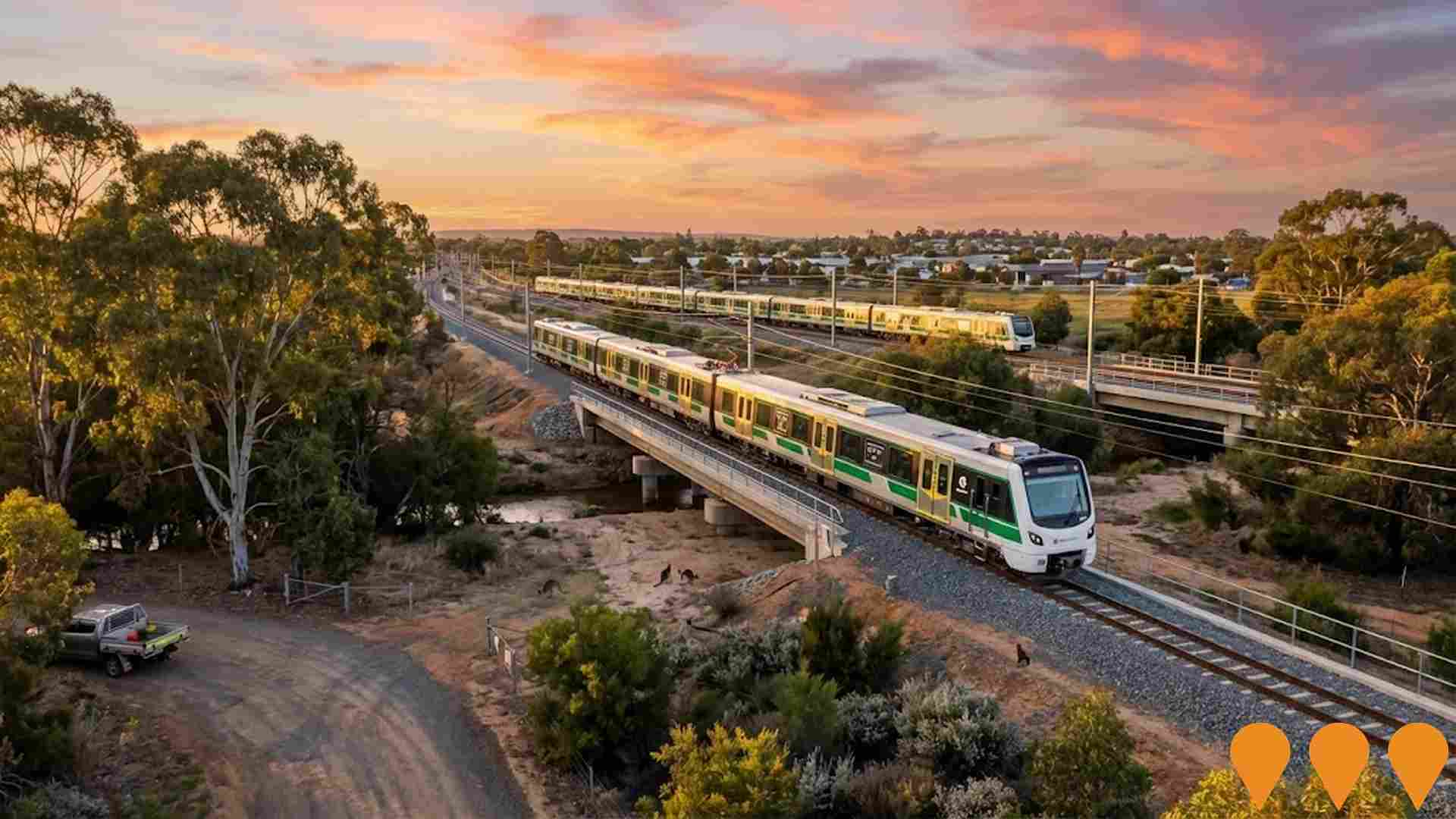
EastLink WA
Whole-of-corridor upgrade to deliver a safer and more efficient route between Perth and Northam, combining upgrades to Reid and Roe Highways with the Perth-Adelaide National Highway (Orange Route) concept from Roe Highway to Gidgegannup and on to Northam. Planning and development for the corridor has been completed, including an Ultimate Design Concept to 2051 and identification of future land requirements. Construction funding is currently committed for associated Reid Highway interchanges (Altone Road and Daviot/Drumpellier Drive, 2025-2027) and a future Henley Brook Avenue interchange; the broader EastLink WA mainline remains subject to business case and future funding decisions.
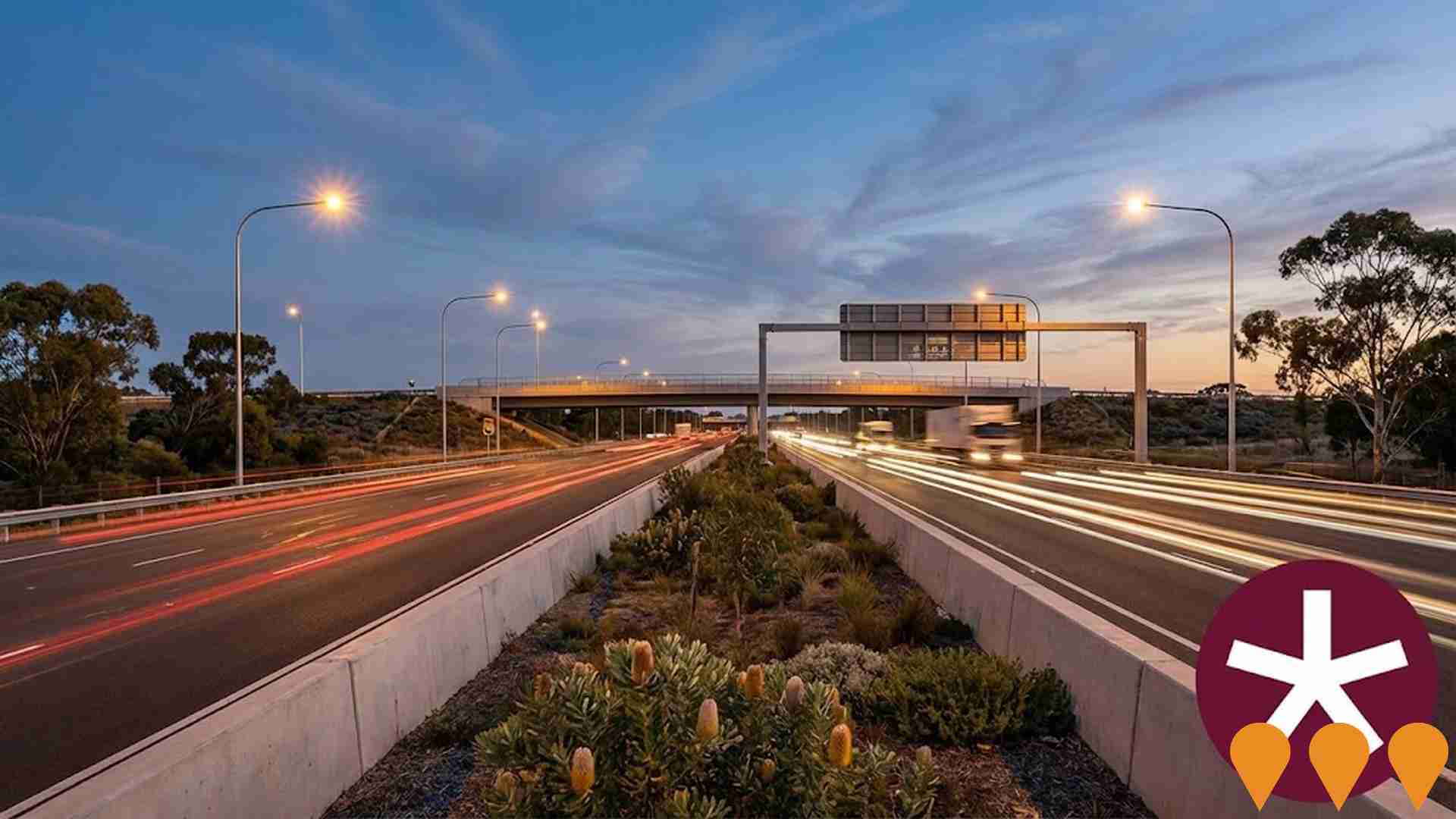
Employment
AreaSearch analysis of employment trends sees Murray performing better than 85% of local markets assessed across Australia
Murray's workforce spans white and blue collar jobs, with strong representation in manufacturing and industrial sectors. Its unemployment rate was 1.3% as of June 2025.
Employment growth over the past year was estimated at 0.7%. As of June 2025, 1,330 residents were employed, with an unemployment rate of 1.9%, below Rest of WA's rate of 3.2%. Workforce participation was broadly similar to Rest of WA's 59.4%. Employment is concentrated in mining (2.6 times the regional level), manufacturing, and agriculture, forestry & fishing.
Health care & social assistance has limited presence at 6.8%, compared to the regional average of 11.9%. The area functions as an employment hub with 1.3 workers per resident. Over the year to June 2025, employment increased by 0.7% while labour force decreased by 1.6%, reducing unemployment by 2.2 percentage points. In comparison, Rest of WA saw employment growth of 1.1%, labour force expansion of 0.5%, and a 0.6 percentage point decrease in unemployment. Jobs and Skills Australia's national employment forecasts from May 2025 project national employment growth of 6.6% over five years and 13.7% over ten years. Applying these projections to Murray's employment mix suggests local growth of approximately 4.2% over five years and 10.5% over ten years, though these are simple extrapolations for illustrative purposes only.
Frequently Asked Questions - Employment
Income
Income analysis reveals strong economic positioning, with the area outperforming 60% of locations assessed nationally by AreaSearch
AreaSearch's latest postcode level ATO data for financial year 2022 shows Murray's median income among taxpayers is $62,795 and the average is $75,050. Nationally, this is high compared to Rest of WA's median of $57,323 and average of $71,163. Based on Wage Price Index growth of 14.2% since financial year 2022, estimates for September 2025 would be approximately $71,712 (median) and $85,707 (average). According to Census 2021 income data, household, family, and personal incomes in Murray rank modestly between the 44th and 44th percentiles. Income analysis reveals that 30.7% of individuals earn between $1,500 - 2,999, similar to regional levels at 31.1%. Housing costs allow for 87.2% retention, but disposable income is below average at the 48th percentile.
Frequently Asked Questions - Income
Housing
Murray is characterized by a predominantly suburban housing profile, with a higher proportion of rental properties than the broader region
Murray's housing structure in its latest census comprised 96.9% houses and 3.2% other dwellings. Non-Metro WA had 95.1% houses and 4.9% other dwellings. Murray's home ownership rate was 39.3%, with mortgaged dwellings at 34.3% and rented ones at 26.4%. The median monthly mortgage repayment in Murray was $1,733, higher than Non-Metro WA's average of $1,105. The median weekly rent in Murray was $280, compared to Non-Metro WA's $200. Nationally, Murray's mortgage repayments were lower than the Australian average of $1,863, and rents were substantially below the national figure of $375.
Frequently Asked Questions - Housing
Household Composition
Murray has a typical household mix, with a higher-than-average median household size
Family households account for 73.5% of all households, including 30.0% couples with children, 33.7% couples without children, and 8.6% single parent families. Non-family households constitute the remaining 26.5%, comprising 25.0% lone person households and 1.7% group households. The median household size is 2.5 people, which is larger than the Rest of WA average of 2.3.
Frequently Asked Questions - Households
Local Schools & Education
Educational outcomes in Murray fall within the lower quartile nationally, indicating opportunities for improvement in qualification attainment
The area's university qualification rate is 15.0%, significantly lower than the Australian average of 30.4%. This presents both a challenge and an opportunity for targeted educational initiatives. Bachelor degrees are most common at 11.3%, followed by postgraduate qualifications (2.3%) and graduate diplomas (1.4%). Trade and technical skills are prevalent, with 42.1% of residents aged 15+ holding vocational credentials - advanced diplomas (8.8%) and certificates (33.3%).
Educational participation is high at 29.0%, including primary education (13.6%), secondary education (8.7%), and tertiary education (1.3%). The area has two schools serving 351 students: Boddington District High School and Dwellingup Primary School. These schools demonstrate typical Australian school conditions with balanced educational opportunities, having an ICSEA score of 977. The educational mix includes one primary school and one K-12 school.
Frequently Asked Questions - Education
Schools Detail
Nearby Services & Amenities
Transport
Transport servicing is very low compared to other areas nationally based on assessment of service frequency, route connectivity and accessibility
Murray has three active public transport stops currently operating. These stops serve a mix of bus routes, specifically two individual routes that together offer 23 weekly passenger trips. The accessibility of these services is limited, with residents typically located 13434 meters from the nearest stop.
On average, across all routes, there are 3 trips per day, which equates to approximately 7 weekly trips per stop.
Frequently Asked Questions - Transport
Transport Stops Detail
Health
Health performance in Murray is lower than average with common health conditions somewhat prevalent across both younger and older age cohorts
Murray faces significant health challenges with common health conditions prevalent across both younger and older age cohorts. Approximately 57% of Murray's total population (~1,511 people) have private health cover, compared to 52.7% across the rest of WA.
The most common medical conditions in Murray are arthritis (impacting 10.1% of residents) and mental health issues (8.0%). 67.7% of Murray's residents declare themselves completely clear of medical ailments, compared to 65.6% across the rest of WA. Murray has 17.1% of residents aged 65 and over (451 people), lower than the 21.7% in the rest of WA. Health outcomes among seniors in Murray are strong, performing better than the general population in health metrics.
Frequently Asked Questions - Health
Cultural Diversity
Murray ranks below the Australian average when compared to other local markets across a number of language and cultural background related metrics
Murray's cultural diversity was found to be below average, with 84.8% of its population being citizens, 83.7% born in Australia, and 95.5% speaking English only at home. Christianity was the main religion in Murray, comprising 41.3% of people. The most notable overrepresentation was seen in Other religions, making up 0.7% compared to 0.4% across Rest of WA.
In terms of ancestry, the top three groups were English (35.4%), Australian (30.6%), and Scottish (8.1%). Notably, New Zealanders were overrepresented at 0.9%, Maori at 0.8%, and French at 0.5% compared to regional averages of 0.9%, 0.8%, and 0.3% respectively.
Frequently Asked Questions - Diversity
Age
Murray hosts an older demographic, ranking in the top quartile nationwide
Murray's median age is 44 years, which is considerably higher than the Rest of WA average of 40 years and substantially exceeds the national average of 38 years. The 55-64 age group represents 15.3% of Murray's population compared to the Rest of WA, while the 35-44 cohort is less prevalent at 12.1%. Post-2021 Census data shows that younger residents have shifted the median age down by 1.2 years to 44 years. Notable shifts include the 25 to 34 age group growing from 10.2% to 12.8%, and the 15 to 24 cohort increasing from 7.4% to 9.8%. Conversely, the 65 to 74 cohort has declined from 12.8% to 9.9%, and the 45 to 54 group dropped from 14.6% to 12.3%. Population forecasts for Murray in 2041 indicate substantial demographic changes. The 25 to 34 age cohort shows the strongest projected growth at 44%, adding 149 residents to reach 487. However, both the 15 to 24 and 85+ age groups are expected to see reduced numbers.
